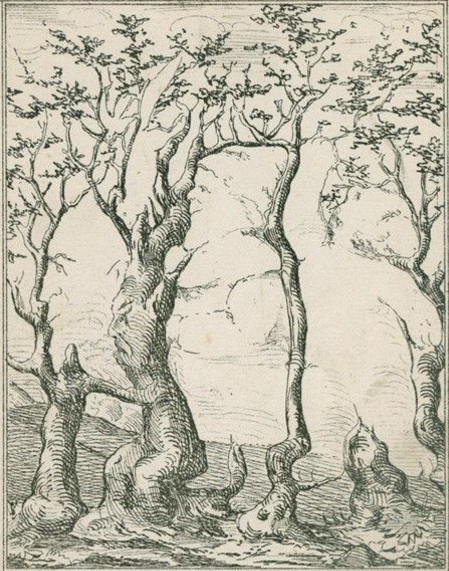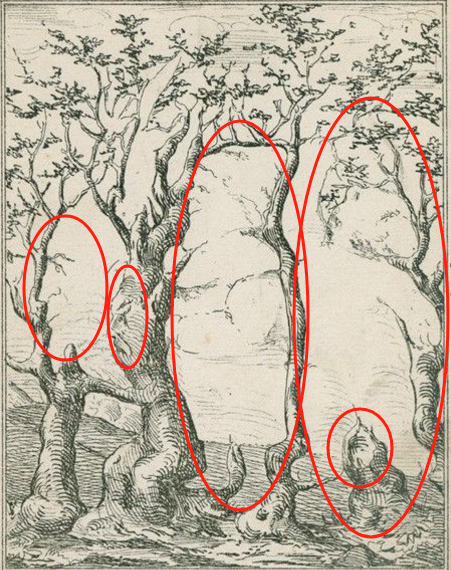Ancient Windswept Trees: Capturing Nature’s Timeless Sculptures in Art
Discovering the Allure of Gnarled Woodland Guardians
Have you ever paused beneath a grove of weathered trees and felt their silent stories stir your imagination? The sweeping curves and knotted trunks of these ancient sentinels evoke centuries of sun, storm, and gentle breeze. In our featured etching-style illustration, a cluster of windswept trees stands in stark relief, their twisted limbs reaching skyward against a distant horizon. This image celebrates nature’s raw artistry—an invitation to explore how these arboreal masterpieces inspire artists, historians, and nature lovers alike.

The Anatomy of a Windswept Tree
What gives these trees their dramatic profile? Several environmental forces shape their form:
- Persistent Prevailing Winds: Constant buffeting erodes bark on the windward side and encourages growth on the lee side, resulting in trunks that bend and sweep directionally.
- Soil and Root Constraints: Shallow or rocky soil forces roots to spread laterally, limiting vertical support and contributing to gnarled, exposed root structures.
- Salt Spray and Coastal Exposure: Near the sea, salt crystals abrade foliage and stunt branch extension, sculpting compact, wind-clipped canopies.
- Competition for Light: In dense forests, trees stretch and twist toward sunlit gaps, creating S-shaped trunks and irregular branching patterns.
Understanding these ecological factors helps us read each tree like a living chronicle of its environment.
Historic Woodcuts and Etchings of Weathered Trees
Artists have long been fascinated by these natural sculptures. In the 17th century, Dutch and German printmakers—such as Hercules Seghers and Albrecht Dürer—etched rugged trees into dramatic landscapes. Their black-and-white prints emphasized:
- High Contrast: Bold dark lines for trunks and branches set against pale sky, echoing the stark resilience of the trees themselves.
- Textural Detail: Cross-hatching and stippling evoke rough bark, mossy knots, and wind-blown foliage, inviting viewers to “feel” the tree’s surface with their eyes.
- Symbolic Resonance: Weathered trees often symbolized endurance, mortality, and the passage of time—a reminder of human fragility against nature’s enduring forces.
By studying these early masters’ techniques, contemporary artists learn to capture both the aesthetic drama and emotional weight of windswept trees.

Techniques for Drawing Your Own Gnarled Trees
Inspired to create your own windswept forest scene? Here’s a step-by-step guide:
- Map the Trunk’s Flow: Begin with a loose S-curve to establish the tree’s lean and sense of movement. Avoid straight lines—nature rarely draws in perfect geometry.
- Branch Hierarchy: Sketch primary limbs first, angling them away from the direction of the prevailing wind. Then add secondary branches, tapering them as they extend.
- Bark Texture: Use irregular, broken lines and short cross-hatches to mimic fissures and ridges. Let your pen lift slightly to create the illusion of roughness.
- Foliage Clusters: Group leaf masses into cloud-like shapes, leaving pockets of sky or negative space to highlight the windswept silhouette.
- Root Detail: Expose gnarled roots weaving over rocks or shallow soil, using thicker pen strokes for foreground elements to enhance depth.
- Contrast and Light: Decide on a light source—add shadows under branches and deepen hatches on the windward side to reinforce the 3D effect.
With practice, your sketches will convey the same weathered poetry seen in classic etchings.

Symbolism and Cultural Meanings
Gnarled, windswept trees carry rich symbolic weight across cultures:
- Resilience and Survival: Their stooped but unbowed forms mirror human capacity to endure trials and thrive against adversity.
- Spiritual Sanctuaries: In Celtic lore, twisted oak groves were sacred, believed to cradle the spirits of ancestors and guardians of the land.
- Life’s Impermanence: Japanese art often features wind-shorn pines as symbols of transient beauty and the constant flux of existence.
- Natural Wisdom: The rings and knots of ancient trunks represent accumulated life experience, inviting reflection and reverence.
By recognizing these meanings, we deepen our connection to both art and the living world.
Conservation: Protecting Nature’s Living Sculptures
As we admire windswept trees, it’s vital to safeguard their habitats:
- Erosion Control: Plant native undergrowth to stabilize soil and prevent root exposure that weakens tree foundations.
- Limiting Foot Traffic: Use boardwalks or designated paths to keep visitors off sensitive root zones.
- Monitoring Disease and Pests: Regularly inspect old trees for signs of rot or insect infestation, and consult arborists for targeted treatment.
- Supporting Protected Areas: Advocate for the preservation of coastal bluffs, mountain ridges, and old-growth forests where windswept forms thrive.
Through stewardship, we ensure future generations can stand beneath these natural monuments and feel the same sense of awe.

Bringing Windswept Trees into Your Space
If you can’t wander a seaside cliff or mountaintop, you can still evoke that wild beauty at home:
- Bonsai Windswept Style: The Japanese “Fukinagashi” bonsai technique trains small trees to mimic wind erosion through pruning, wiring, and pot orientation.
- Interior Artwork: Acquire prints or paintings of gnarled trees, pairing them with natural wood frames to echo the subject matter.
- Garden Sculptures: Incorporate driftwood or carved wooden arches that channel the same sense of movement and weathering.
- Textile Accents: Cushions, throw blankets, or wallpaper with stylized tree branch patterns can bring the motif indoors in a modern, abstract form.
By translating the windswept aesthetic into everyday elements, you invite nature’s drama into your daily life.

Conclusion: Celebrating the Gnarled Elegance of Windswept Trees
From the rugged coastlines of distant lands to the intimate scale of bonsai pots, windswept trees captivate us with their sculptural forms, symbolic depth, and untold stories. By studying historic etchings, honing your own drawing techniques, and supporting conservation efforts, you become part of an age-old tradition: honoring nature’s artistry and resilience. So next time you glimpse a bent trunk against the sky or sketch a twisted branch in your notebook, remember—you’re witnessing a living masterpiece shaped by wind, time, and unwavering perseverance.





